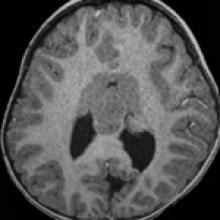March 3, 2014
An 18-month-old boy born through nonconsanguinous marriage, with uneventful pre- and perinatal history, presents with delayed milestones, spastic quadriparesis, and seizures. Detailed examination revealed dystonia and choreoathetoid movements of upper limbs and spastic quadriparesis.







